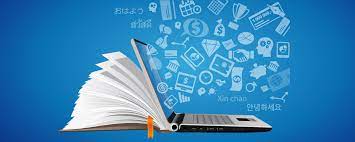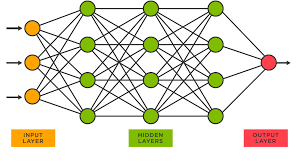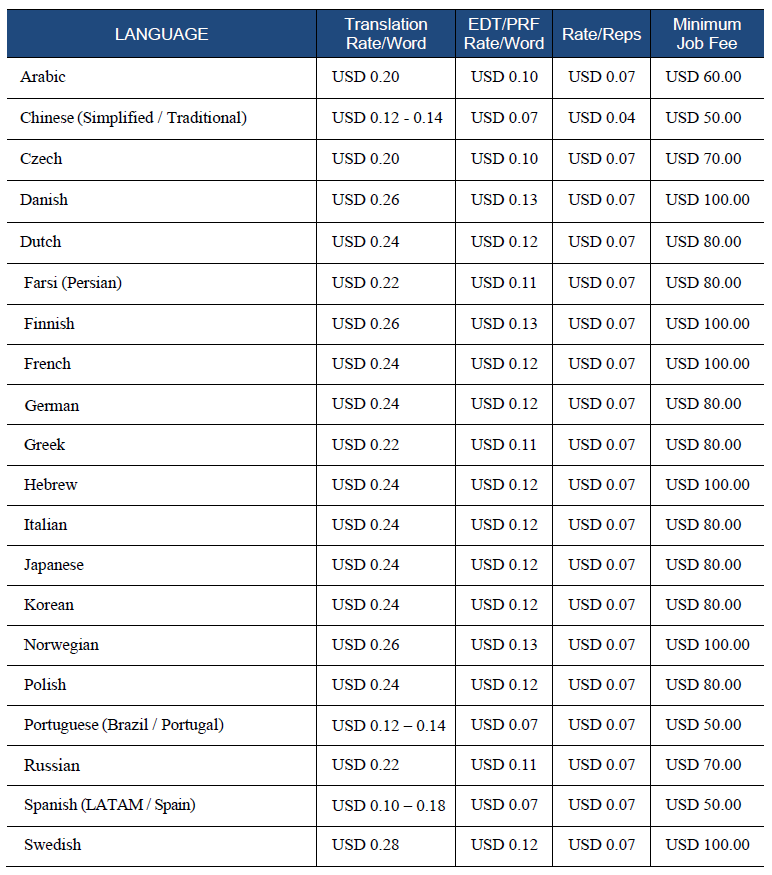Document Translation: Breaking Language Barriers for Global Communication
In today’s interconnected world, communication and collaboration have become essential for individuals and businesses alike. However, with over 7,000 languages spoken worldwide, language barriers can pose a significant challenge to effective communication. This is where document translation comes in.
Document translation refers to the process of converting written content from one language to another while maintaining the original meaning and intent. It is a critical tool that enables individuals and businesses to communicate effectively across linguistic boundaries.
The need for document translation arises in various situations such as legal proceedings, business transactions, academic research, medical treatment, immigration processes, and more. In these scenarios, accurate translation of documents such as contracts, agreements, certificates, reports, manuals, and other materials is crucial for ensuring mutual understanding and compliance with regulations.
Professional document translation services employ skilled linguists who are fluent in both the source and target languages. They have expertise in specific fields such as law, finance, medicine or technology which allows them to accurately translate technical jargon and industry-specific terms.
Translation agencies use advanced technologies such as machine learning algorithms to improve accuracy and speed up the process while maintaining quality. These tools help translators by suggesting appropriate translations of terms based on context analysis from previous translations.
However, despite technological advancements in translation software solutions like Google Translate or DeepL Translator which provide quick translations for free online; professional document translation services remain superior when it comes to accuracy and consistency. The human touch is still necessary when it comes to translating sensitive documents that require precision.
Moreover, professional translators also understand cultural nuances that may impact how a message is received by the target audience. For instance; idioms or colloquial expressions may not have an equivalent in the target language hence requiring adaptation or explanation.
When choosing a document translation service provider; it’s crucial to ensure they offer secure handling of confidential documents since some documents contain sensitive information that must be kept confidential at all times. A reputable translation agency should have secure data handling protocols in place to protect clients’ privacy.
In conclusion, document translation is a vital tool for breaking language barriers and enabling effective communication on a global scale. It requires skilled linguists who understand the nuances of both the source and target languages and use advanced technologies to improve accuracy, speed, and consistency. Professional document translation services are essential for ensuring accurate translations of sensitive documents that require precision while maintaining confidentiality.
7 Essential Tips for Accurate and Culturally Appropriate Document Translation
- Research the target language to ensure accuracy and cultural appropriateness.
- Use a professional translator with experience in the subject matter of the document.
- Proofread the translation for accuracy and grammar mistakes before finalizing it.
- Ensure that any technical terminology is correctly translated to maintain accuracy and clarity.
- Check that any formatting or layout requirements are met when translating documents into other languages, such as right-to-left text for Arabic or Hebrew translations.
- If there are multiple versions of a document, make sure all versions are accurately translated before distribution to avoid confusion and inconsistency across languages
- Make sure the translation is localized for its intended audience – this means adapting it to local customs, culture, idioms, etc., so that it reads naturally in its target language
Research the target language to ensure accuracy and cultural appropriateness.
Researching the target language is a crucial step in ensuring accurate and culturally appropriate document translation. It involves understanding the nuances of the target language, including grammar, syntax, vocabulary, and cultural context.
When translating documents, it’s essential to consider the cultural differences between the source and target languages. This includes understanding idioms, colloquial expressions, and cultural references that may not have a direct equivalent in the target language. Failure to take these differences into account can result in inaccurate translations that could be offensive or confusing to the target audience.
Researching the target language also helps ensure that technical terms are translated accurately. For instance, medical or legal documents may contain technical terms that require precise translation to avoid misinterpretation or confusion.
In addition to accuracy, researching the target language also ensures cultural appropriateness. Different cultures have different values, beliefs, and customs that must be taken into account when translating documents. For example, certain words or phrases may carry negative connotations in one culture but be perfectly acceptable in another.
In conclusion, researching the target language is an essential step in document translation. It helps ensure accuracy and cultural appropriateness while avoiding misunderstandings or offense to the target audience. Professional document translation services employ skilled linguists who understand both source and target languages and have expertise in specific fields such as law or medicine which allows them to provide accurate translations while taking cultural differences into account.
Use a professional translator with experience in the subject matter of the document.
When it comes to document translation, accuracy and precision are key. Using a professional translator with experience in the subject matter of the document can make a significant difference in the quality of the translation.
A professional translator who is knowledgeable in the subject matter of the document can accurately translate technical terms and jargon specific to that field. For example, if you need a legal document translated, it’s essential to use a translator who has experience in legal terminology and understands the nuances of legal language.
Using a professional translator with subject matter expertise also ensures that cultural nuances are taken into account. Translators with experience in specific fields understand how certain words or phrases may be interpreted differently by people from different cultures or regions. This knowledge helps them provide translations that are culturally appropriate for the target audience.
In addition, using a professional translator with subject matter expertise can save time and money. Translators who are familiar with specific fields can work more efficiently since they don’t need to spend as much time researching technical terms or concepts.
Overall, using a professional translator with experience in the subject matter of your document is essential for ensuring accurate translations that are culturally appropriate and technically precise. It’s always best to work with a reputable translation agency that employs skilled linguists who have expertise in your industry or field.
Proofread the translation for accuracy and grammar mistakes before finalizing it.
Proofreading: The Final Step in Document Translation
Document translation is a critical process that enables effective communication across linguistic barriers. It involves converting written content from one language to another while maintaining accuracy and meaning. However, even the most skilled translators can make mistakes, which is why proofreading is an essential step in the document translation process.
Proofreading involves reviewing the translated document for accuracy and grammar mistakes before finalizing it. This step helps to ensure that the translated content accurately reflects the original message and is free from any errors that may impact its readability or clarity.
When proofreading a translated document, it’s important to pay attention to details such as spelling, punctuation, and grammar. This ensures that the translated text is not only accurate but also easy to understand for readers who are not familiar with the source language.
Proofreading also helps to identify any cultural nuances that may have been missed during translation. This can be especially important when translating idioms or colloquial expressions that may not have an equivalent in the target language.
By taking the time to proofread a translated document, you can ensure that it accurately conveys your message and effectively communicates with your target audience. It’s a small but crucial step in the document translation process that can make all the difference in achieving successful communication across linguistic barriers.
In conclusion, proofreading is an essential step in document translation that should never be overlooked. It helps to ensure accuracy, readability, and clarity of your translated content while also identifying any cultural nuances that may have been missed during translation. By taking this extra step, you can ensure that your message is effectively communicated to your target audience and break down language barriers for successful communication on a global scale.
Ensure that any technical terminology is correctly translated to maintain accuracy and clarity.
When it comes to document translation, accuracy and clarity are paramount. One of the most critical aspects of ensuring accurate translation is to ensure that any technical terminology is correctly translated. Technical terms can be industry-specific jargon, scientific or medical terminology, or even acronyms and abbreviations.
If technical terminology is not translated correctly, it can lead to confusion, misinterpretation, and potentially costly errors. For instance, in legal documents such as contracts or agreements, a single mistranslated term could have significant consequences for all parties involved.
To ensure that technical terminology is accurately translated, it’s essential to work with professional translators who have expertise in specific fields. They understand the context in which these terms are used and can provide accurate translations that maintain the original meaning and intent.
It’s also crucial to provide translators with any necessary reference materials such as glossaries or style guides. These resources help ensure consistency in terminology across all documents and translations.
In conclusion, accurate translation of technical terminology is crucial for maintaining accuracy and clarity in document translation. Working with professional translators who have expertise in specific fields and providing them with necessary reference materials are essential steps towards achieving this goal. By doing so, you can ensure that your translations are accurate, consistent, and effective in breaking language barriers for global communication.
Check that any formatting or layout requirements are met when translating documents into other languages, such as right-to-left text for Arabic or Hebrew translations.
When it comes to document translation, it’s not just about accurately translating the words from one language to another. It’s also important to consider any formatting or layout requirements that may be necessary for a particular language.
For example, languages such as Arabic and Hebrew are written from right to left instead of left to right like English. This means that when translating documents into these languages, the layout and formatting of the original document must be adjusted accordingly.
Failing to meet these formatting or layout requirements can result in a poorly formatted document that is difficult to read and understand. It can also lead to confusion and misunderstandings, which can have serious consequences in legal or business contexts.
To ensure that any formatting or layout requirements are met when translating documents into other languages, it’s important to work with professional translators who have experience in the target language. They will be able to advise on any adjustments needed for the translated document and ensure that it meets all necessary requirements.
In addition, using specialized translation software can help streamline the process of adjusting layouts and formats for different languages. This software will automatically adjust the layout based on the target language, saving time and ensuring accuracy.
In conclusion, when translating documents into other languages, it’s important to consider any formatting or layout requirements needed for that language. Working with professional translators who have experience in the target language and using specialized translation software can help ensure that your translated documents are accurate and well-formatted.
If there are multiple versions of a document, make sure all versions are accurately translated before distribution to avoid confusion and inconsistency across languages
When it comes to document translation, accuracy is key. One important tip to keep in mind is to ensure that all versions of a document are accurately translated before distribution to avoid confusion and inconsistency across languages.
It’s not uncommon for there to be multiple versions of a document, especially in a business or legal setting. For example, there may be different language versions of a contract or agreement. If these versions are not all accurately translated, it can lead to confusion and misunderstandings.
Imagine if one version of a contract was translated correctly but another version had errors or omissions. This could lead to inconsistencies in the terms and conditions, which could cause problems down the line.
To avoid these issues, it’s important to ensure that all versions of a document are accurately translated before distribution. This means working with a professional translation service that can handle multiple languages and ensure consistency across all versions.
By taking the time to ensure accurate translations across all versions of a document, you can avoid misunderstandings and confusion that could potentially harm your business or legal proceedings. So remember, accuracy is key when it comes to document translation!
Make sure the translation is localized for its intended audience – this means adapting it to local customs, culture, idioms, etc., so that it reads naturally in its target language
When it comes to document translation, accuracy is key. However, it’s not just about translating the text word for word. To ensure that the translation is effective, it’s essential to make sure that it’s localized for its intended audience.
Localization refers to adapting the translation to the local customs, culture, idioms, and other linguistic nuances of the target language. This means making sure that the text reads naturally and fluently in its target language and resonates with its intended audience.
For example, if you’re translating a marketing brochure for a product or service in a foreign market, you’ll want to make sure that the language used reflects local customs and cultural sensitivities. This might mean using different images or graphics in the brochure or changing certain phrases or expressions that may not be relevant or appropriate for the target audience.
Similarly, idiomatic expressions can vary widely from one language to another. For instance; “raining cats and dogs” is an English idiom meaning heavy rain; but might not make sense when translated literally into another language. A good translator will know how to adapt such expressions so that they make sense in their target language.
In conclusion, localization is an important aspect of document translation that should not be overlooked. By adapting translations to local customs, culture, idioms etc., we can ensure that our message resonates with our target audience and communicates effectively across linguistic barriers. So next time you need something translated; make sure you choose a translator who understands localization and can help your message read naturally in its target language!



